News
Bus passengers awaken to a nightmare, families mourn the dead
View(s):Sri Lanka does not currently have an emergency preparedness plan for accidents in mountainous regions
By Tharushi Weerasinghe in Kotmale
Commuter Sajith Dissanayake boarded the night bus from Kataragama, settling into the seat just in front of the back door. Once a month, he takes leave from the hotel where he works — and almost always boards the same bus home to Rikillagaskada.
He was lightly dozing when, just before dawn, a loud bang jolted him awake. “The lights went out, and people started screaming. I heard the driver say not to panic —he said a tyre had gone off-road,” Mr Dissanayake recalled. Chaos erupted as passengers, still half-asleep, scrambled toward the doors. “We tilted for what felt like a minute. Then we toppled.”
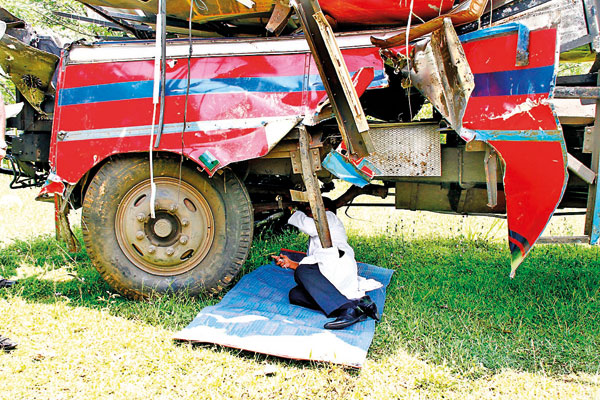
In the aftermath of the tragedy: Inspection being carried out on what was left of the bus
When the bus finally came to a halt, Sajith, 20 found himself wedged inside. “There was an opening — maybe a window. I crawled out and just sat there for a minute. My back hurt so much.”
He is among the survivors of a devastating crash that claimed 23 lives. Sixty more passengers were injured.
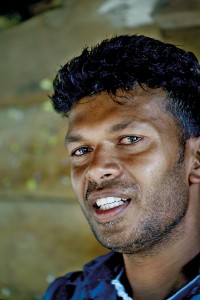
Resident turned rescuer: With tear-filled eyes Chamara recounts his tale. Pix by Indika Handuwala
The night bus travelling from Kurunegala to Kataragama had veered off the road and plunged into a ravine around 4.45 a.m. last Sunday. The rescue effort — by residents and emergency services — lasted over six hours. Down the slope, a single tree lay stripped of its bark where the bus had struck on the way down into a stream surrounded by rocks at the bottom of the precipice.Where the bus fell, flowers, sacks of carrots, rice, and fruits were strewn, even on Wednesday, gifts meant for happier destinations.
“I got a call at 4.52 a.m. Someone said there’d been an accident and that children were screaming,” said Chamara Senarath, 41, one of the first locals to respond. He roused his neighbours, jumped into his trishaw, and rushed to the scene. “At the top of the cliff, I saw a mother and her three children. They were bleeding badly, so I took them to Kotmale Hospital.”
At the hospital, Mr. Senarath informed staff about the accident and that they should prepare for a large influx of casualties. After a few more trips back and forth to the hospital, he climbed down into the precipice with other rescuers because Suwa Seriya ambulance services had arrived. When he got into the crag to help pull bodies and victims out, some 100 metres below the road, light was finally breaking through, and he saw the extent of the damage.
The bus lay wheels up with the driver’s end jammed into a big rock over the stream. “There were bodies on bodies stuck in the metal of the bus.”
Mr. Senarath told the Sunday Times it was impossible to lift either side of the bus, as doing so would crush those trapped on the opposite end. He recalled victims pleading with rescuers to lift the wreckage just enough to escape, unaware that the same cries were coming from the other side.
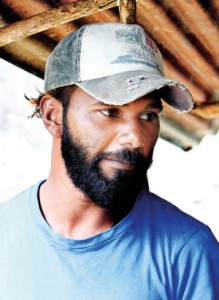
Eranga Sandaruwan
“Every time I close my eyes, I hear those voices screaming for help, and the helplessness I felt,” he said.
“Everyone went into the precipice as they were, so we did not have any tools to work with initially,” said Eranga Sandaruwan, 32, another resident turned rescuer from the area. People who had fallen over the nearby tea plantation were tangled in the trees.
“We initially pulled some of the trees out with our hands, but soon sickles and hoes were brought in and we began digging people out.” He noted that whatever requirement was shouted over the crowd was met within a matter of minutes by someone in the neighbourhood.
People were also stuck in the crevices made on the stream bank by the impact of the bus hitting the ground, and they were also rescued by digging under them to slide them out.
A collective decision was also made to cut the bus up and residents managed to get a power line and grinders to do the job.
Some casualties were initially strapped to the seats and pulled up, but emergency services soon set up a support line leading to the Ramboda Primary School playground about 300 metres away.
He noted that the villagers and authorities worked in a chain of support that quickly fell into a line of people helping casualties out of the debris, supporting those still stuck inside, and carrying them to the medics. “We managed to save as many people as we did because everyone contributed, one way or the other and no help was too small.”
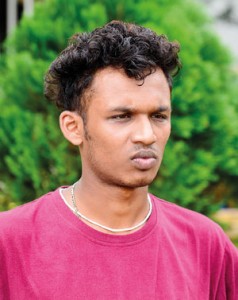
Sajith Dissanayake
A first responder from the scene confirmed this. He wished to remain anonymous. “There was a baby stuck under her mother, who was pinned down by the bus waist-down, and when I arrived on the scene, one of the residents was holding the baby’s head up so it wouldn’t get hurt.”
He had carried the child to the ambulance and called for milk. “I meant powdered milk, but another mother on the scene came forward and fed the baby. She said it would be better for the child.” When the first responder went back to where the mother lay, she asked what happened to her baby and then smiled when assured she was fine.
Videos and photos of the mother and child were shared widely across social media, celebrating the mother’s strength and perseverance. The responder told the Sunday Times that she held on until she was released from the bus and handed over to medical services. “She didn’t scream, she just whimpered now and then, the strength she showed will stay with me forever.” She died later at the hospital.
He noted that residents were constantly giving the wounded water and providing whatever comfort they could until the debris was moved safely for rescue. “At one point, about 60 people got together to try and lift the bus at the same time, but it was stuck.” The people were pressed against the roof because it was upturned, and the bus was crushed.
Most rescuers asked people to stop recording, “especially because some victims were asking us not to,” said 40-year-old Dhammika Pushpakumara, another resident recalling how one young man with a bar that had pierced his leg kept asking them not to tell his mother.
According to the Kotmale Police OIC, Chief Inspector Vajira Ratnayake, officers were on the scene within 10 minutes of the first call he received from someone in the area.
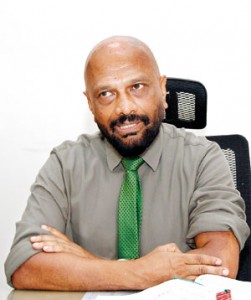
Dr.Sarath Weerabandara
Residents at the incident confirmed that plain-clothes policemen were in the rescue teams early on. They were later joined by the army and Special Task Force officers. “I got to the scene within 20 minutes and instructed that the ambulances be directed to the primary school rather than the top of the cliff because climbing with injured victims was time-consuming and risky.”
The Kotmale station did not have some of the equipment the incident needed, but depots and community members in Nuwara Eliya, Gampola, and Pusselawa sent over boom lifts by around 7 a.m. upon his request. “But the positioning of the bus and the depth of its fall made it too risky to attempt to lift.”
As of Friday, out of the 57 casualties that were in hospital, 45 were discharged, the OIC confirmed.
At the Peradeniya Children’s Hospital, three children of the same family remain, with the youngest, a six-month-old, still in the Surgical Intensive Care Unit following multiple surgeries to remove debris from various internal wounds.
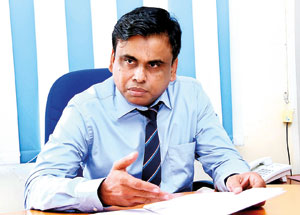
Dr.Duminda Dias
“Their mother had passed away before arriving at Kotmale, and their father is currently in the ICU at Nuwara Eliya, so the boys are being kept here together even though one of them is technically well enough to be discharged,” said hospital director Dr. Sarath Weerabandara. Custody of the children during the father’s recovery is also a concern, and the hospital is working with the Kandy district office of the Women and Children’s Affairs Ministry to handle the legal formalities and ensure child wellbeing once they are all discharged from the hospital.
While the hospital closest to the incident was the Kotmale Divisional Hospital, casualties were transferred to Peradeniya, Nawalapitiya, Nuwara Eliya, and Gampola.
“Kotmale Hospital mostly separated the dead and sent patients out to the tertiary hospitals,” said Gampola Base Hospital director Dr. Duminda Dias, who also added that while mental health assistance was available there, most patients were from other districts, which would make those hospitals more accessible for counselling. He said the Gampola hospital had done an emergency practice drill very recently, which had also helped ensure swift treatment during the incident.
Many residents told the Sunday Times that one of their requests was for more resources to be made available in Kotmale because while the staff “was great” the facilities were inadequate.
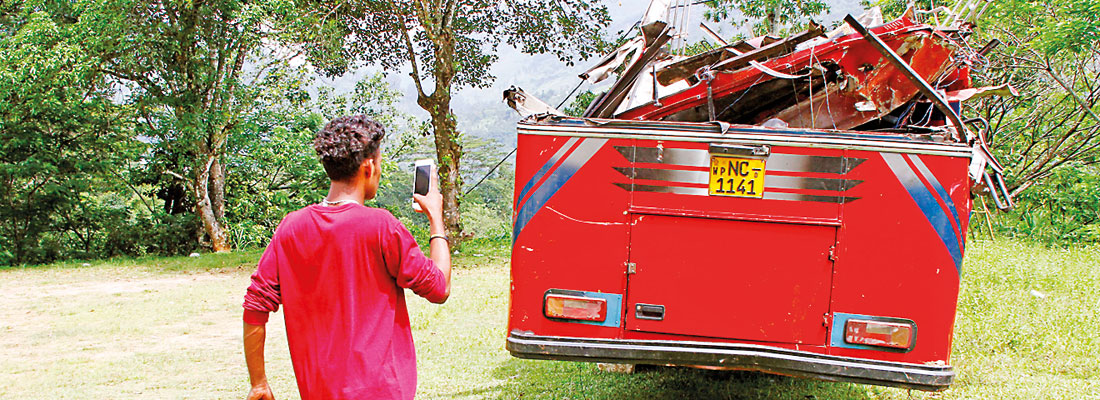
One of the lucky survivors: Sajith takes a picture of the ill fated bus
Director General of Health Dr. Asela Gunawardena, however, noted that this was because Kotmale was a primary care institute and was equipped as such. “Patients were transferred to tertiary care hospitals, which have the facilities needed.”
Commenting on the emergency preparedness plans that hospitals should usually have, he noted that base, district, and general facilities have practice drills once a year. “PCIs usually have one ambulance, but tertiary care hospitals will have about six – but ambulance services generally function collaboratively with regional support, and Suwa Seriya 1990.”
However, the Sunday Times found that Sri Lanka does not currently have an emergency preparedness plan for accidents in mountainous regions.
Pradeep Kodippili, spokesperson for the Disaster Management Centre (DMC), said emergency preparedness in Sri Lanka is guided by the Disaster Management Act No. 13 of 2005 and involves coordinated action across 50 institutions.
The framework includes the National Disaster Management Plan and the National Emergency Operations Plan, covering 21 recognised disaster types. Each institution operates under Standard Operating Procedures (SOPs) that outline responsibilities in the pre-, during-, and post-disaster phases.
“In a transport accident, the SOP comes from the Ministry of Transport,” Mr Kodippili said, adding that the DMC’s role is to coordinate and facilitate, especially in large-scale incidents.
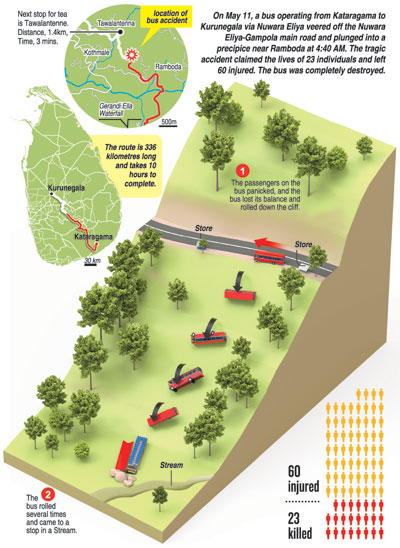
For mass casualty events, hospital preparedness plans have been developed in collaboration with the Ministry of Health. “Rehearsals have been carried out in several districts to improve coordination from the site of the incident to hospital admission,” he confirmed.
Mr Kodippili said that while structures are in place, overall readiness depends on input from multiple sectors. “I can’t say we are completely prepared for an accident of this nature, as information from other institutions is needed to assess that.”
“Our first responsibility is to prevent accidents,” said Rohana Chandrasiri, deputy general manager (operations) of the Sri Lanka Transport Board (SLTB). “But when one occurs, we follow clear procedural guidelines, even though they aren’t formally called SOPs.”
The ministry operates under 21 procedural guidelines, with guideline 15 covering accident responses, and includes instructions for drivers, conductors, depot staff, inquiry processes, legal steps, and documentation.
“These are covered in the 14-day induction training,” Mr Chandrasiri said. Updates are issued via circulars, with occasional refresher programmes.
SLTB officers helped at hospitals and documented the incident, but much of the immediate response came from the villagers mainly, aided by the military, medical teams, and police. The ministry also provided transport home for discharged patients, though exact numbers are still being determined.
Mr Chandrasiri said the ministry plans to support affected families through education, employment, and compensation initiatives. “We also want to understand what went wrong so we can prevent a repeat.”
The government announced on Wednesday that families of the deceased will be given Rs. 1m in compensation from the President’s Fund, and those injured will each receive Rs. 25,000 from the SLTB. Funds have already been credited to divisional secretariats.
Four reports will guide the ministry’s next steps: a forensic analysis, the driver’s post-mortem, a police report, and an inspection by the Department of Motor Vehicles. The SLTB will submit its report. “These will be reviewed before any final decisions are made,” Mr. Chandrasiri said.
The best way to say that you found the home of your dreams is by finding it on Hitad.lk. We have listings for apartments for sale or rent in Sri Lanka, no matter what locale you're looking for! Whether you live in Colombo, Galle, Kandy, Matara, Jaffna and more - we've got them all!

